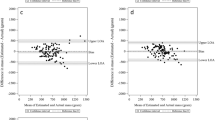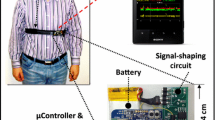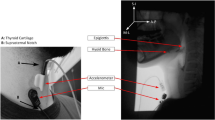Abstract
Studies of food intake and ingestive behavior in free-living conditions most often rely on self-reporting-based methods that can be highly inaccurate. Methods of Monitoring of Ingestive Behavior (MIB) rely on objective measures derived from chewing and swallowing sequences and thus can be used for unbiased study of food intake with free-living conditions. Our previous study demonstrated accurate detection of food intake in simple models relying on observation of both chewing and swallowing. This article investigates methods that achieve comparable accuracy of food intake detection using only the time series of swallows and thus eliminating the need for the chewing sensor. The classification is performed for each individual swallow rather than for previously used time slices and thus will lead to higher accuracy in mass prediction models relying on counts of swallows. Performance of a group model based on a supervised method (SVM) is compared to performance of individual models based on an unsupervised method (K-means) with results indicating better performance of the unsupervised, self-adapting method. Overall, the results demonstrate that highly accurate detection of intake of foods with substantially different physical properties is possible by an unsupervised system that relies on the information provided by the swallowing alone.



Similar content being viewed by others
References
Alpaydin, E. Introduction to Machine Learning. Cambridge: MIT Press, 2004.
Amft, O., and G. Tröster. Recognition of dietary activity events using on-body sensors. Artif. Intell. Med. 42(2):121–136, 2008.
Caballero, B. The global epidemic of obesity: an overview. Epidemiol. Rev. 29(1):1–5, 2007.
Champagne, C. M., G. Bray, A. Kurtz, J. B. R. Monteiro, E. Tucker, J. Volaufova, and J. P. Delany. Energy intake and energy expenditure, a controlled study comparing dietitians and non-dietitians. J. Am. Diet. Assoc. 102(10):1428–1432, 2002.
Chang, C. C., and C. J. Lin. LIBSVM: A Library for Support Vector Machines, 2001. http://www.csie.ntu.edu.tw/cjlin/libsvm.
Day, N. E., N. McKeown, M. Y. Wong, A. Welch, and S. Bingham. Epidemiological assessment of diet: a comparison of a 7-day diary with a food frequency questionnaire using urinary markers of nitrogen, potassium and sodium. Int. J. Epidemiol. 30(2):309–317, 2001.
De Castro, J. M. Methodology, correlational analysis, and interpretation of diet diary records of food and fluid intake of free-living humans. Appetite 23(2):179–192, 1994.
Duda, R. O., P. E. Hart, and D. G. Stork. Pattern Classification. New York: Wiley, 2001.
Flegal, K. M., M. D. Carroll, R. J. Kuczmarski, and C. L. Johnson. Overweight and obesity in the United States: prevalence and trends, 1960–1994. Int. J. Obes. 22(1):39–47, 1998.
Hsu, C. W., C. C. Chang, and C. J. Lin. A Practical Guide to Support Vector Classification, 2004. http://www.csie.ntu.edu.tw/~cjlin.
Jam, A. K., M. N. Murty, and P. J. Flynn. Data clustering: a review. ACM Comput. Surv. 31(3):264–323, 1999.
Kotsiantis, S. B. Supervised machine learning: a review of classification techniques. Informatica 31:249–268, 2007.
Kotsiantis, S. B., and P. E. Pintelas. Recent advances in clustering: a brief survey. WSEAS Trans. Inform. Sci. Appl. 1:73–81, 2004.
Livingstone, M. B., and A. E. Black. Markers of the validity of reported energy intake. J. Nutr. 133(3):895S–920S, 2003.
Livingstone, M. B., A. M. Prentice, J. J. Strain, W. E. Coward, A. E. Black, M. E. Barker, P. G. McKenna, and R. G. Whitehead. Accuracy of weighed dietary records in studies of diet and health. Br. Med. J. 300(6726):708–712, 1990.
Mertz, W., J. C. Tsui, J. T. Judd, S. Reiser, J. Hallfrisch, E. R. Morris, P. D. Steele, and E. Lashley. What are people really eating? The relation between energy intake derived from estimated diet records and intake determined to maintain body weight. Am. Soc. Nutr. 54:291–295, 1991.
Meyer, D., F. Leisch, and K. Hornik. The support vector machine under test. Neurocomputing 55(1–2):169–186, 2003.
Ogden, C. L., M. D. Carroll, L. R. Curtin, M. A. McDowell, C. J. Tabak, and K. M. Flegal. Prevalence of overweight and obesity in the United States, 1999–2004. J. Am. Med. Assoc. 295(13):1549–1555, 2006.
Olshansky, S. J., D. J. Passaro, R. C. Hershow, J. Layden, B. A. Carnes, J. Brody, L. Hayflick, R. N. Butler, D. B. Allison, and D. S. Ludwig. A potential decline in life expectancy in the United States in the 21st century. N. Engl. J. Med. 352(11):1138–1145, 2005.
Olson, D. L. Advanced Data Mining Techniques. New York: Springer Verlag, 2008.
Pi-Sunyer, F. X., D. M. Becker, and C. Bouchard. Clinical guidelines on the identification, evaluation, treatment of overweight, obesity in adults. Obes. Res. 6:51S–209S, 1998.
Poppitt, S. D., D. Swann, A. E. Black, and A. M. Prentice. Assessment of selective under-reporting of food intake by both obese and non-obese women in a metabolic facility. Int. J. Obes. Relat. Metab. Disord. 22(4):303–311, 1998.
Prentice, A. M., A. E. Black, P. R. Murgatroyd, G. R. Goldberg, and W. A. Coward. Metabolism or appetite: questions of energy balance with particular reference to obesity. J. Hum. Nutr. Diet. 2(2):95–104, 1989.
Rand, C. S. W., A. M. C. Macgregor, and A. J. Stunkard. The night eating syndrome in the general population and among postoperative obesity surgery patients. Int. J. Eat. Disord. 22(1):65–69, 1997.
Rodionov, A., and A. L’vov. Comparison of linear, nonlinear and feature selection methods for EEG signal classification. In: APEDE Int. Conf., 2004, pp. 436–439.
Sazonov, E. S., S. A. Schuckers, P. Lopez-Meyer, O. Makeyev, E. L. Melanson, M. R. Neuman, and J. O. Hill. Toward objective monitoring of ingestive behavior in free-living population. Obes. Res., 2009. doi:10.1038/oby.2009.153.
Sazonov, E. S., S. A. Schuckers, P. Lopez-Meyer, O. Makeyev, N. Sazonova, E. L. Melanson, and M. R. Neuman. Non-invasive monitoring of chewing and swallowing for objective quantification of ingestive behavior. Physiol. Meas. 29(5):525–541, 2008.
Siek, K. A., K. H. Connelly, Y. Rogers, P. Rohwer, D. Lambert, and J. L. Welch. When Do We Eat? An evaluation of food items input into an electronic food monitoring application. In: Proc. Int. Conf. Pervasive Comp. Tech. Healthc, IEEE CS Press, 2006, pp. 1–10.
US Department of Health and Human Services. The Surgeon General’s Call to Action to Prevent and Decrease Overweight and Obesity. Washington, DC: US Government Printing Office, 2001.
Weber, J. L., P. M. Reid, K. A. Greaves, J. P. DeLany, V. A. Stanford, S. B. Going, W. H. Howell, and L. B. Houtkooper. Validity of self-reported energy intake in lean and obese young women, using two nutrient databases, compared with total energy expenditure assessed by doubly labeled water. Eur. J. Clin. Nutr. 55(11):940–950, 2001.
Wolf, A. M., and G. A. Colditz. Current estimates of the economic cost of obesity in the United States. Obes. Res. 6(2):97–106, 1998.
Yannakoulia, M. Eating behavior among Type 2 Diabetic patients: a poorly recognized aspect in a poorly controlled disease. Rev. Diabet. Stud. 3(1):11–16, 2006.
Acknowledgment
We gratefully acknowledge support provided by NIH grant 5R21HL083052-02.
Author information
Authors and Affiliations
Corresponding author
Additional information
Associate Editor Berj L. Bardakjian oversaw the review of this article.
Rights and permissions
About this article
Cite this article
Lopez-Meyer, P., Makeyev, O., Schuckers, S. et al. Detection of Food Intake from Swallowing Sequences by Supervised and Unsupervised Methods. Ann Biomed Eng 38, 2766–2774 (2010). https://doi.org/10.1007/s10439-010-0019-1
Received:
Accepted:
Published:
Issue Date:
DOI: https://doi.org/10.1007/s10439-010-0019-1




